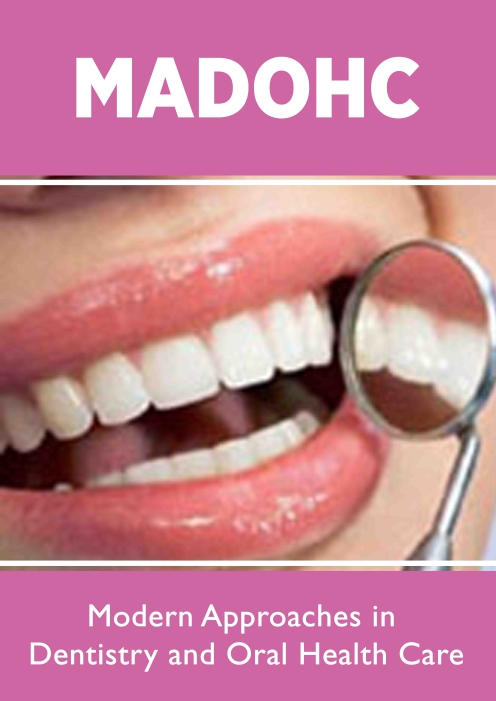-
Review ArticleView abstract
 PDF
PDF
 Full text
The correct placement of dental implants based on scientific evaluations began at the time of Branemark. In the beginnings of implantology, osseointegration was the main factor that determined the success of the dental implant in the mouth, but from numerous subsequent studies it has been proven that there are many factors that determine the success of the dental implant. Many criteria have been proposed, but none is so decisive as to be based on it alone. This literature review will compare the various factors that influence dental implant success and what are some of the most important criteria derived from research studies for implant success..... ReadMore
Full text
The correct placement of dental implants based on scientific evaluations began at the time of Branemark. In the beginnings of implantology, osseointegration was the main factor that determined the success of the dental implant in the mouth, but from numerous subsequent studies it has been proven that there are many factors that determine the success of the dental implant. Many criteria have been proposed, but none is so decisive as to be based on it alone. This literature review will compare the various factors that influence dental implant success and what are some of the most important criteria derived from research studies for implant success..... ReadMore -
Review ArticleView abstract
 PDF
PDF
 Full text
“Today we are faced with the preeminent fact that, if civilizationis to survive, we must cultivate the science of human relationships- the ability of all peoples, of all kinds, to live together and work together, in the same world, at peace.”..... ReadMore
Full text
“Today we are faced with the preeminent fact that, if civilizationis to survive, we must cultivate the science of human relationships- the ability of all peoples, of all kinds, to live together and work together, in the same world, at peace.”..... ReadMore -
Research ArticleView abstract
 PDF
PDF
 Full text
This study aimed to determine if there was a significant difference in root canal obturation quality between single- rooted teeth produced using a manual approach and those prepared using a rotational method, as determined by intraoral periapical radiographs...... ReadMore
Full text
This study aimed to determine if there was a significant difference in root canal obturation quality between single- rooted teeth produced using a manual approach and those prepared using a rotational method, as determined by intraoral periapical radiographs...... ReadMore -
Mini ReviewView abstract
 PDF
PDF
 Full text
The term “artificial intelligence” (AI) generally refers to the capability of an artificial machine to perform a human task. Recently, AI have been attracting attention as a potential modern approach in different medical fields, including dentistry. This concise review aims to introduce the basic concepts..... ReadMore
Full text
The term “artificial intelligence” (AI) generally refers to the capability of an artificial machine to perform a human task. Recently, AI have been attracting attention as a potential modern approach in different medical fields, including dentistry. This concise review aims to introduce the basic concepts..... ReadMore -
EditorialView abstract
 PDF
PDF
 Full text
Plasma cell myeloma is a multifocal plasma cell neoplasm preponderantly incriminating the bone marrow demonstrating monoclonal immunoglobulin (M protein) within serum or urine and accompanying end organ damage. Additionally designated as multiple myeloma...... ReadMore
Full text
Plasma cell myeloma is a multifocal plasma cell neoplasm preponderantly incriminating the bone marrow demonstrating monoclonal immunoglobulin (M protein) within serum or urine and accompanying end organ damage. Additionally designated as multiple myeloma...... ReadMore -
Mini ReviewView abstract
 PDF
PDF
 Full text
The relationship between sports and oral health is increasingly being studied. In addition to the psychological and physical benefits, sports can have risks [1,2]. Oral health must be considered to optimize athletic performance and to reduce the risks due to physical activi..... ReadMore
Full text
The relationship between sports and oral health is increasingly being studied. In addition to the psychological and physical benefits, sports can have risks [1,2]. Oral health must be considered to optimize athletic performance and to reduce the risks due to physical activi..... ReadMore -
Research ArticleView abstract
 PDF
PDF
 Full text
Dental caries is the most common chronic disease of childhood and largely preventable with good oral hygiene practices. Identifying the multiple, contextual risk factors that contribute to decay is important to inform public health interventions. This study aimed to investigate associations...... ReadMore
Full text
Dental caries is the most common chronic disease of childhood and largely preventable with good oral hygiene practices. Identifying the multiple, contextual risk factors that contribute to decay is important to inform public health interventions. This study aimed to investigate associations...... ReadMore -
Research ArticleView abstract
 PDF
PDF
 Full text
This retrospective cohort study explored factors and diseases present at time of implant failure and determined that in addition to having a history of periodontal disease and non-compliance with maintenance recalls, there are high levels of systemic conditions, including cardiovascular disease, arthritis, osteoporosis, emotional disorders, and other systemic diseases present at time of implant loss..... ReadMore
Full text
This retrospective cohort study explored factors and diseases present at time of implant failure and determined that in addition to having a history of periodontal disease and non-compliance with maintenance recalls, there are high levels of systemic conditions, including cardiovascular disease, arthritis, osteoporosis, emotional disorders, and other systemic diseases present at time of implant loss..... ReadMore
Lupine Publishers Group
Lupine Publishers
ISSN: 2637-4692
Modern Approaches in Dentistry and Oral Health Care
MADOHC is the open access journal and provides untrammelled ingress to the journal to anyone who wishes to know more about the topical developments in the field of dental and oral health care. We strive to bring together the incisiveness in the field and create an affluent compilation of research material that helps document all the work that the thousands of professionals are liability in the field of Dentistry and Oral Health. This scholarly journal revitalize researches pertaining to all sciences pertinent to dentistry and to the oral health care with accentuation on dental diseases, periodontology, endodontic, oral and maxillofacial surgery, pediatric dentistry, oral medicine and pathology, dental management and oral health. Authors are optimistic to submit papers based on new findings from original data collection or new analyses of existing data. The brisk editorial and foregone conclusion free publishing system will relieve the readers to access quality papers in dentistry and oral health care impact factor journals and promulgate acquaintance for the amelioration of the scientific society.


















.png)
.jpg)

